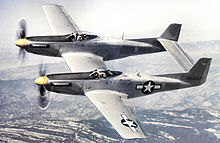Twin-fuselage aircraft
As early as 1913, the Radley-England Waterplane racing flying boat demonstrated the concept at the hands of pilot Gordon England.
During WWI, Caproni introduced one of the first production landplanes to feature twin fuselages, in the Ca.4 heavy bomber, manufacturing around 50 aircraft in a range of variants.
During World War II the need arose for a heavy glider tug capable of towing the large Gotha Go 242 and even larger Messerschmitt Me 321 Gigant.
The Heinkel He 111Z Zwilling (twin) was created by joining two He 111 fuselages with a new wing centre section and adding a fifth central engine.
During World War II a need arose for a heavy fighter, which could not be met by a new design proposal in a reasonable time frame.
More recently the idea of a dedicated re-usable large mothership, capable of carrying and launching a spacecraft, has gained interest.
Early concepts included the Conroy Virtus and Twin-fuselage Lockheed C-5 Galaxy Shuttle transport aircraft of 1974.
Featuring twin Yak-55 fuselages with a third, centrally-mounted jet engine, it is the only trimotor cleared for unlimited aerobatics and performs at events in the USA.
